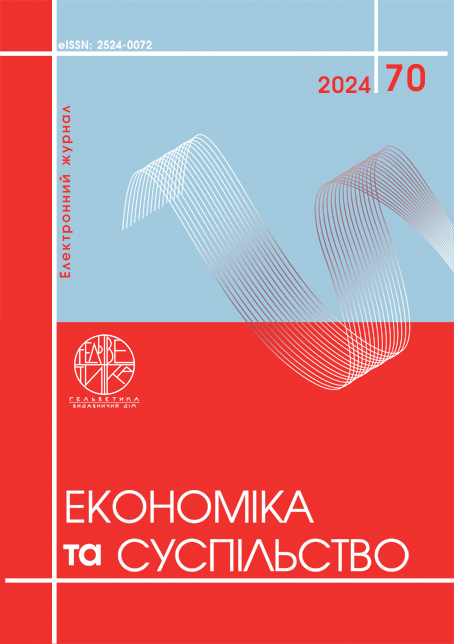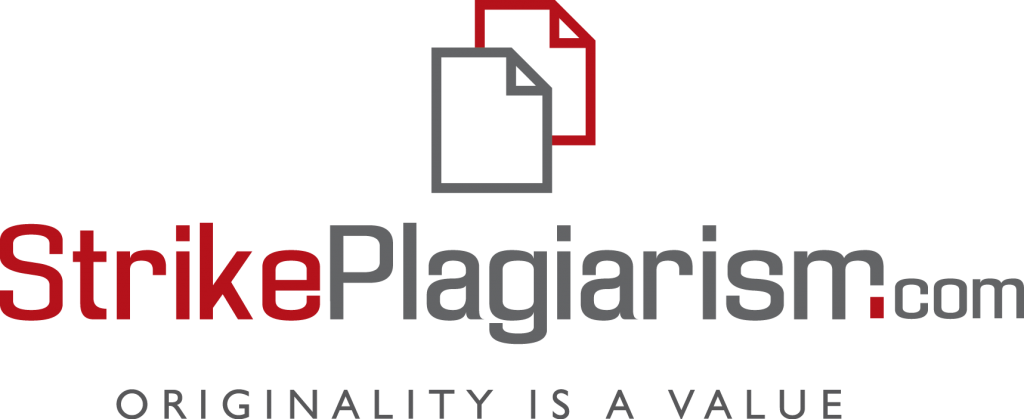SMART-TRANSFORMATIONS IN THE RESOURCE-COMMUNICATION MODEL OF MANAGEMENT OF THE PRODUCTION AND ECONOMIC COMPLEX
Abstract
The article examines changes in the tools for managing the organizational and economic activities of the production and economic complex in the context of using smart-technologies and/or transitioning to smart-production. The purpose of the article is to substantiate and provide proposals for taking into account changes in the resource and communication model of management of the production and economic complex in the context of the implementation of smart technologies and the transition to smart production. Research methods: systematic approach, analysis, synthesis, comparison, generalization. Information and organizational changes in the resource and communication model have been identified, which will allow for the management of product resource intensity based on the conversion of data arrays on technological processes generated by smart equipment in real time into information for operational accounting of the activities of the production and economic complex.These changes are associated with the processing of large data sets about technological processes and the formation of economic information for the resource and communication model, which is the basis of the coordination centre of the information and computer system for managing the production and economic complex and includes software and hardware, accounting, organizational, and analytical blocks. It is proposed to include a block “technological data-economic information” in the resource-communication model, in which data arrays about technological processes generated by smart equipment in real time will be converted into operational information for financial and management accounting and transmitted to the accounting and analytical blocks. Organizational changes in the resource-communication model of the production and economic complex are associated with ensuring a coordinated transition to the use of smart technologies in the management of primary and secondary resources, including secondary energy resources, by participants in an inter-sectoral association of enterprises on the basis of industrial symbiosis (circular production, environmental safety, and comfortable living conditions for the population). It is substantiated that in the resource and communication model of managing the production and economic complex, when assessing the impact of the introduction of smart technologies on the profitability of production, along with reducing the resource intensity of products, it is advisable to take into account the receipt of environmental and/or social effects. Keywords: the production and economic complex, tools for managing
References
Куцмус Н.М, Макаренко О.М. Концепція «smart-економіки»: виклики та перспективи для бізнесу в умовах глобалізації. Економіка та суспільство. 2024. №67. URL:https://doi.org/10.32782/2524-0072/2024-67-156
Теплюк М.А., Пузько С.Г. Інтелектуальні драйвери побудови смарт-економіки в умовах сучасних викликів розвитку глобальної економіки на засадах системного підходу. Вчені записки КНЕУ. 2023. Вип. 24. С. 220-232
Олешко А.А., Шацька З.Я., Ровнягін О.В. SMART-спеціалізація України в перспективі післявоєнного відновлення економіки. Ефективна економіка. 2022. №5. DOI: 10.32702/2307-2105-2022.5.9
Нікітін Ю. О., Кульчицький О. І. «Smart» парадигма як основа визначення: розумна організація, розумна компанія, розумна фабрика. Інноваційна економіка. 2018. № 1-2 (73). С. 153-161
Ткачова Т.С. Розвиток розумних виробництв: реалізація концепції стратегії розвитку смарт-промисловості. ECONOMICS: time realities. 2020 №3. С.108-114
Herrmann F. The Smart Factory and Its Risks. Systems. 2018. Том 4. №6. URL:https://doi.org/10.3390/systems6040038
Phuyal S., Diwakar B., Bista R. Challenges, opportunities and future directions of smart manufacturing: a state of art review. Sustainable Futures 2020. Vol.2. P.100023
Ящишина І. В. Суть та особливості смарт-підприємств. Наукові записки Національного університету «Острозька академія». Серія «Економіка». 2018. № 11(39). С. 14-18.
Башинська І.О. SMART-підхід до визначення цілей смартизації промислового підприємства. Вчені записки ТНУ імені В. І. Вернадського. Серія: Економіка та управління. 2019. Том 30 (69). № 5. С. 41-46.
Шпак Н.О. Кісь С.Ю. Особливості формування системи менеджменту «розумними підприємствами» Економіка та суспільство. 2022 №42. DOI: https://doi.org/10.32782/2524-0072/2022-42-51
Чайкіна А.О., Устенко О.С. Європейський досвід впровадження SMART-підходу на підприємстві. Інфраструктура ринку. 2020. Вип. 42. С. 211-216.
Мельникова М.В. Ресурсно-комунікаційний підхід до управління економічним потенціалом. Наукові засади формування та використання економічного потенціалу. Моногр. Черкаси: ЧНУ, 2013. С.263- 273.
Kutsmus N.M, Makarenko O.M/ (2024). Kontseptsiia «smart-ekonomiky»: vyklyky ta perspektyvy dlia biznesu v umovakh hlobalizatsii. [The concept of "smart-economy": challenges and prospects for business in the context of globalization]. Ekonomika ta suspilstvo. Vol. 67. URL:https://doi.org/10.32782/2524-0072/2024-67-156 [in Ukrainian].
Tepliuk M.A., Puzko S.H. (2023) Intelektualni draivery pobudovy smart-ekonomiky v umovakh suchasnykh vyklykiv rozvytku hlobalnoi ekonomiky na zasadakh systemnoho pidkhodu. [Intellectual drivers of building a smart-economy in the context of modern challenges of global economic development based on a systemic approach]. Vcheni zapysky KNEU. Vol. 24. P. 220-232 [in Ukrainian].
Oleshko A.A., Shatska Z.Ya., Rovniahin O.V. (2022) SMART-spetsializatsiia Ukrainy v perspektyvi pisliavoiennoho vidnovlennia ekonomiky. [SMART-specialization of Ukraine in the perspective of post-war economic recovery]. Efektyvna ekonomika.Vol.5. DOI: 10.32702/2307-2105-2022.5.9 [in Ukrainian].
Nikitin Yu.O., Kulchytskyi O.I. (2018) «Smart» paradyhma yak osnova vyznachennia: rozumna orhanizatsiia, rozumna kompaniia, rozumna fabryka. [The "Smart" paradigm as the basis for the definition: smart organization, smart company, smart factory]. Innovatsiina ekonomika. Vol. 1-2(73). P. 153-161 [in Ukrainian].
Tkachova T.S. (2020) Rozvytok rozumnykh vyrobnytstv: realizatsiia kontseptsii stratehii rozvytku smart-promyslovosti [Development of smart industries: implementation of the concept of a smart industry development strategy]. ECONOMICS: time realities. Vol.3. P.108-114. [in Ukrainian].
Herrmann Frank. (2018). The Smart Factory and Its Risks. Systems Vol.4 (6). URL: https://doi.org/10.3390/systems6040038
Phuyal S., Diwakar B., Bista R. Challenges, opportunities and future directions of smart manufacturing: a state of art review. Sustainable Futures 2020. Vol.2. P.100023 DOI: 10.1016/j.sftr.2020.100023
Yashchyshyna I.V. (2020) Sut ta osoblyvosti smart-pidpryiemstv. [The essence and features of smart enterprises]. Naukovi zapysky Natsionalnoho universytetu «Ostrozka akademiia». Vol.11(39). С. 14-18 [in Ukrainian].
Bashynska I.O. (2019) SMART-pidkhid do vyznachennia tsilei smartyzatsii promyslovoho pidpryiemstva [SMART approach to defining the goals of smartization of an industrial enterprise]. Vcheni zapysky TNU imeni V. I. Vernadskoho. Seriia: Ekonomika ta upravlinnia. Vol. 30 (69). no. 5. P. 41-46 [in Ukrainian].
Shpak N.O., Kis S.Yu. (2022) Osoblyvosti formuvannia systemy menedzhmentu «rozumnymy pidpryiemstvamy» [Features formation of management system of "smart enterprises"]. Ekonomika ta suspilstvo. Vol. 42. DOI: https://doi.org/10.32782/2524-0072/2022-42-51[in Ukrainian].
Chaikina A.O., Ustenko O.S. (2020) Yevropeiskyi dosvid vprovadzhennia SMART-pidkhodu na pidpryiemstvi. [European experience in implementing the SMART approach at the enterprise]. Infrastruktura rynku. Vol. 42. P. 211-216 [in Ukrainian].
Melnykova M.V. (2013) Resursno-komunikatsiinyi pidkhid do upravlinnia ekonomichnym potentsialom [Resource-communication approach to economic potential management]. Naukovi zasady formuvannia ta vykorystannia ekonomichnoho potentsialu. Monohr. Cherkasy: ChNU. P.263-273 [in Ukrainian].

This work is licensed under a Creative Commons Attribution 4.0 International License.


